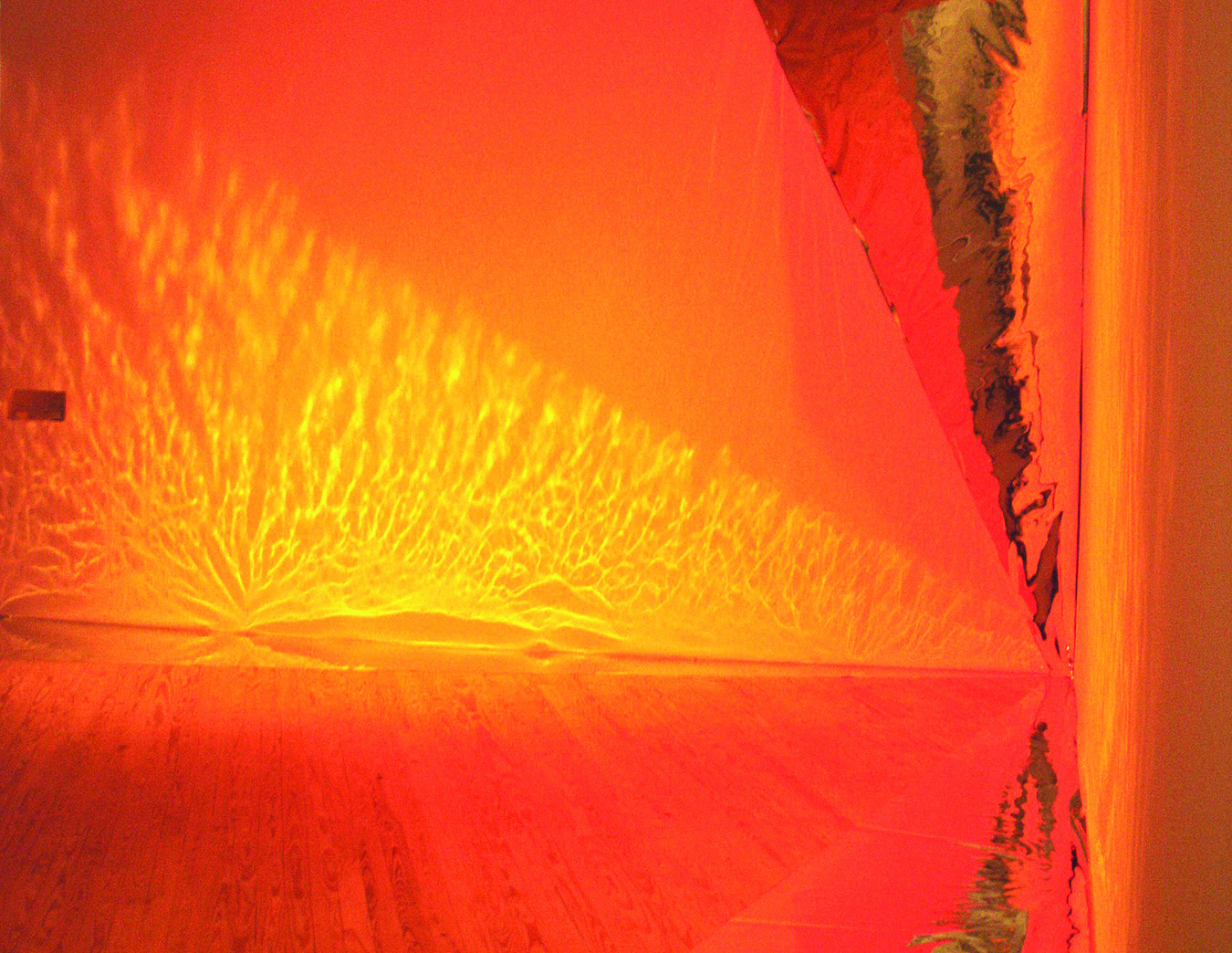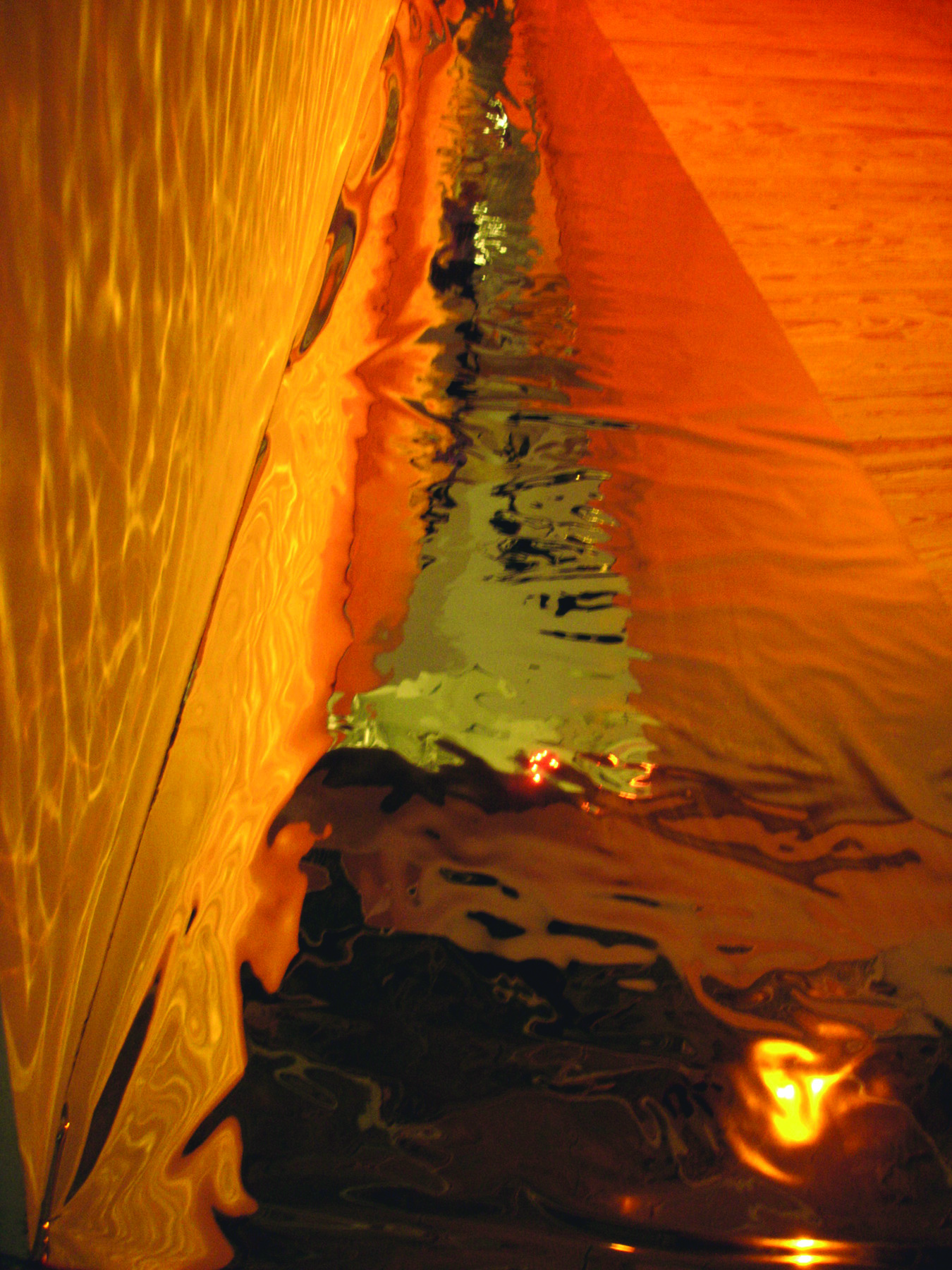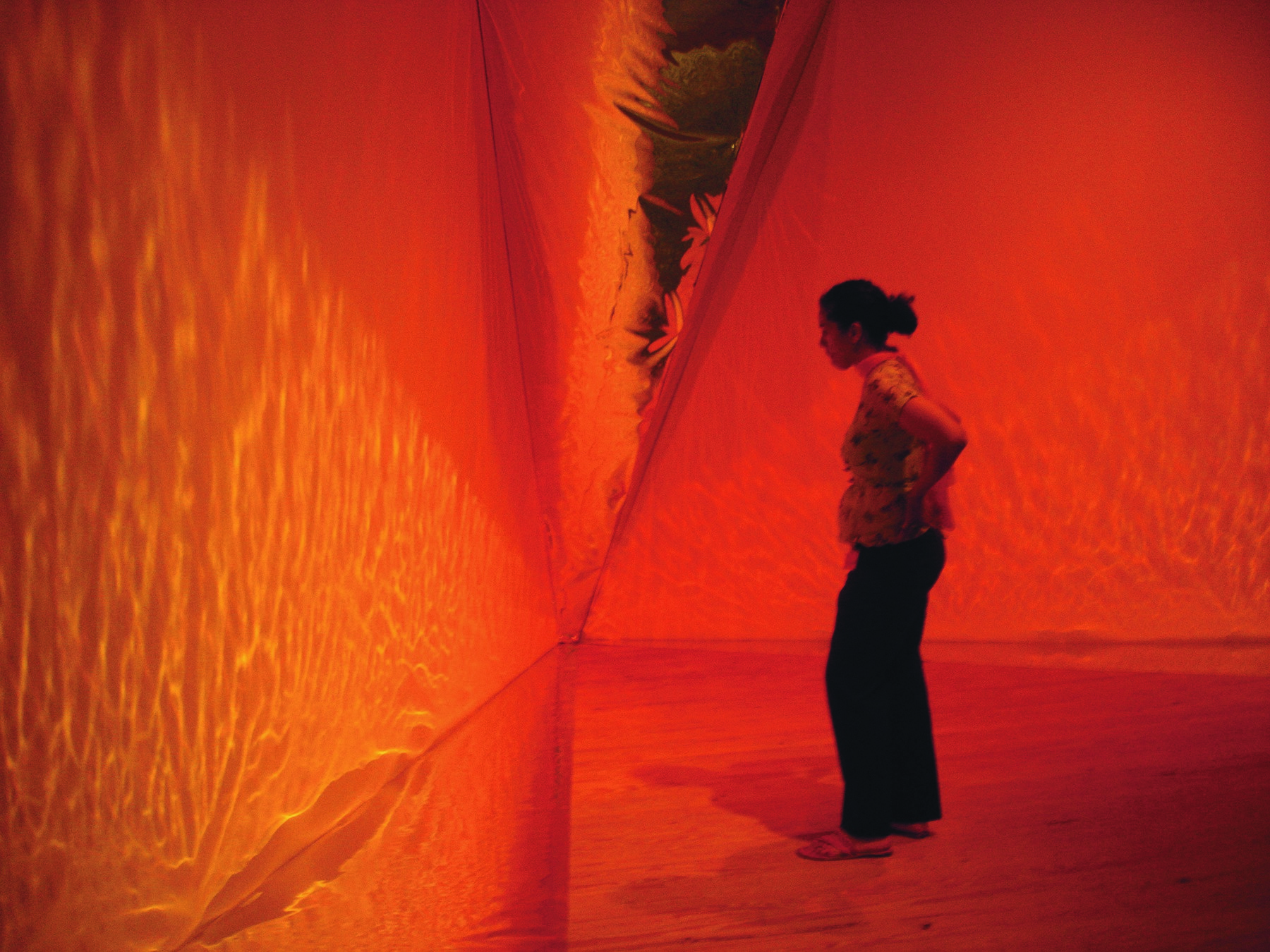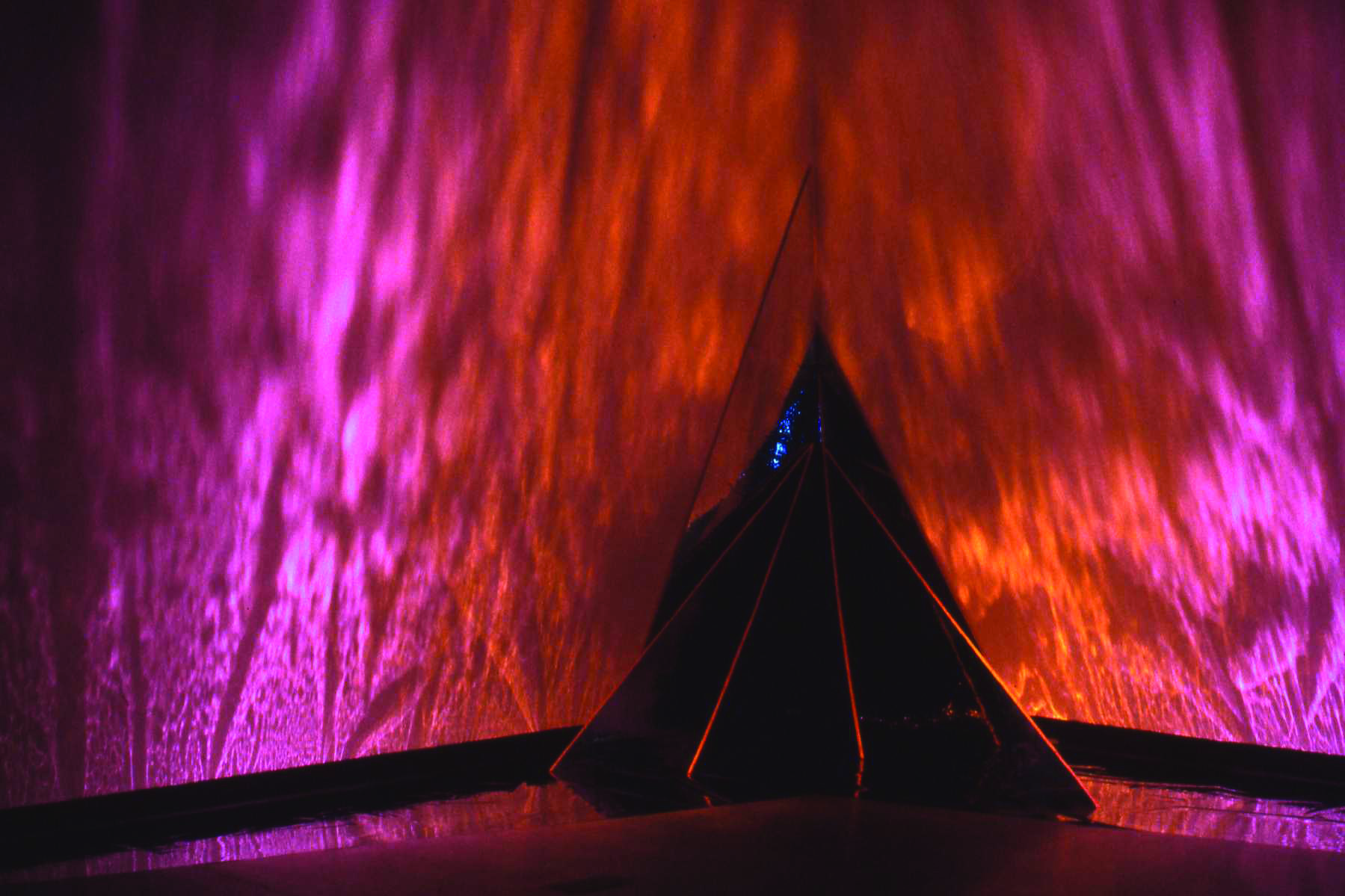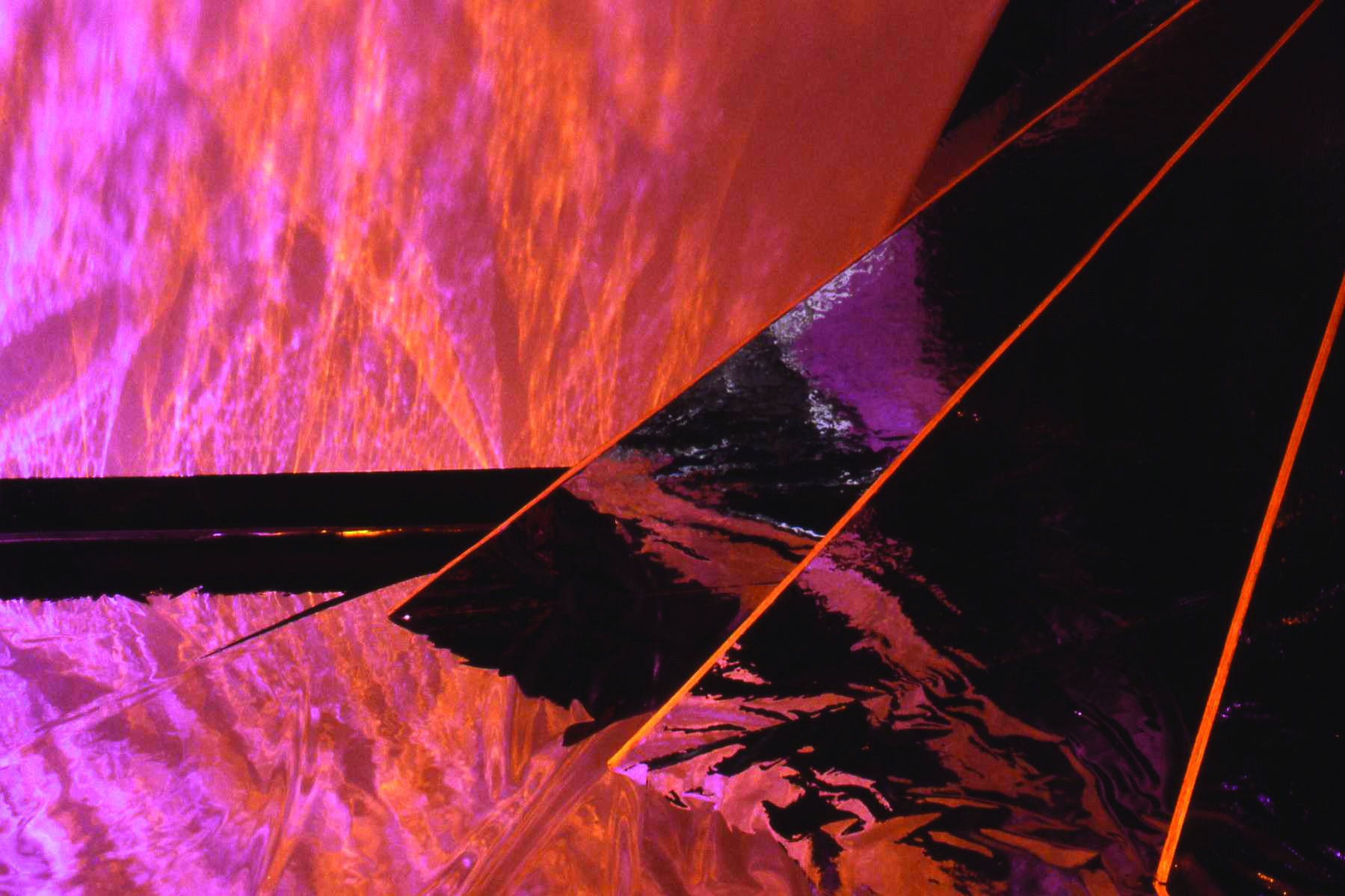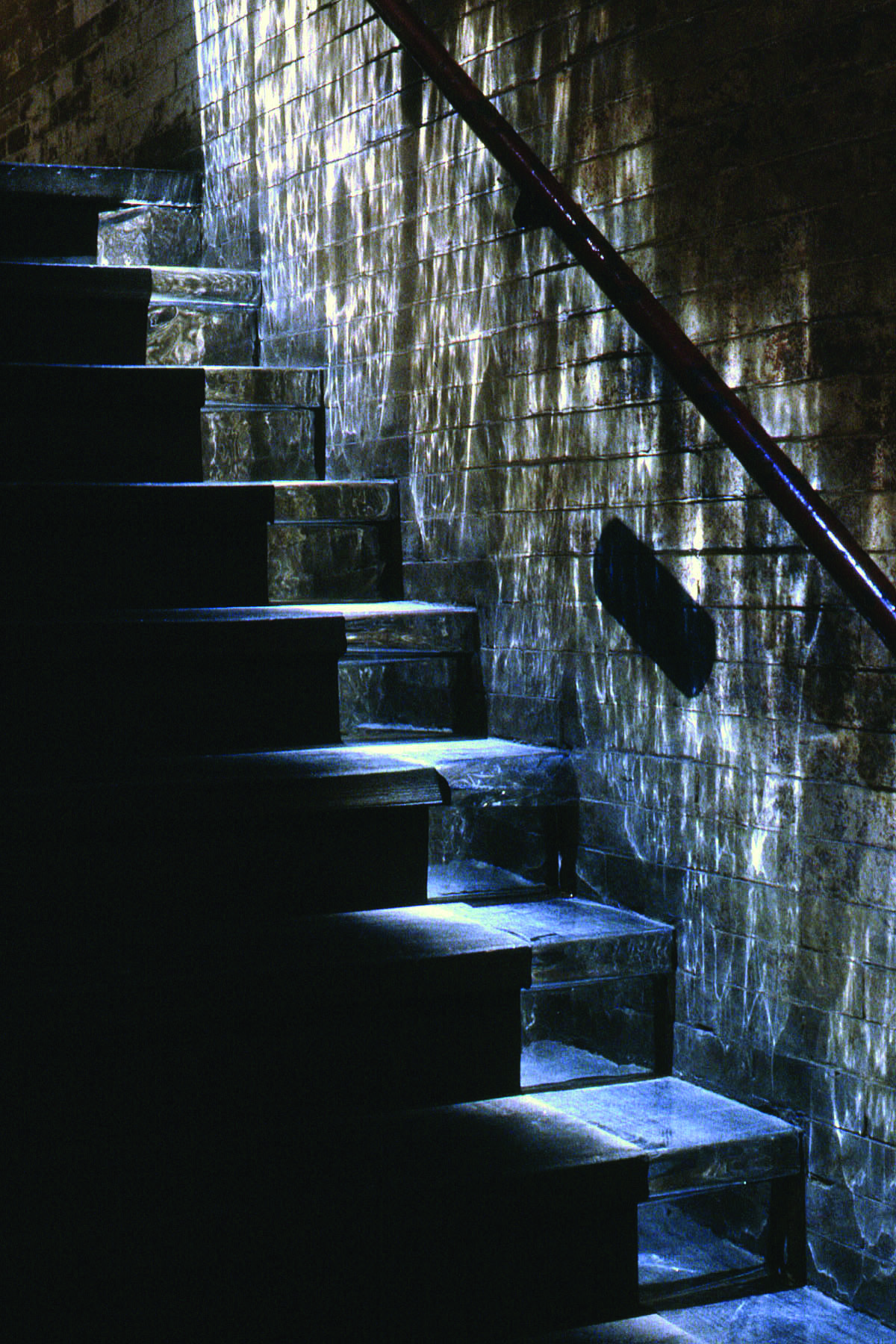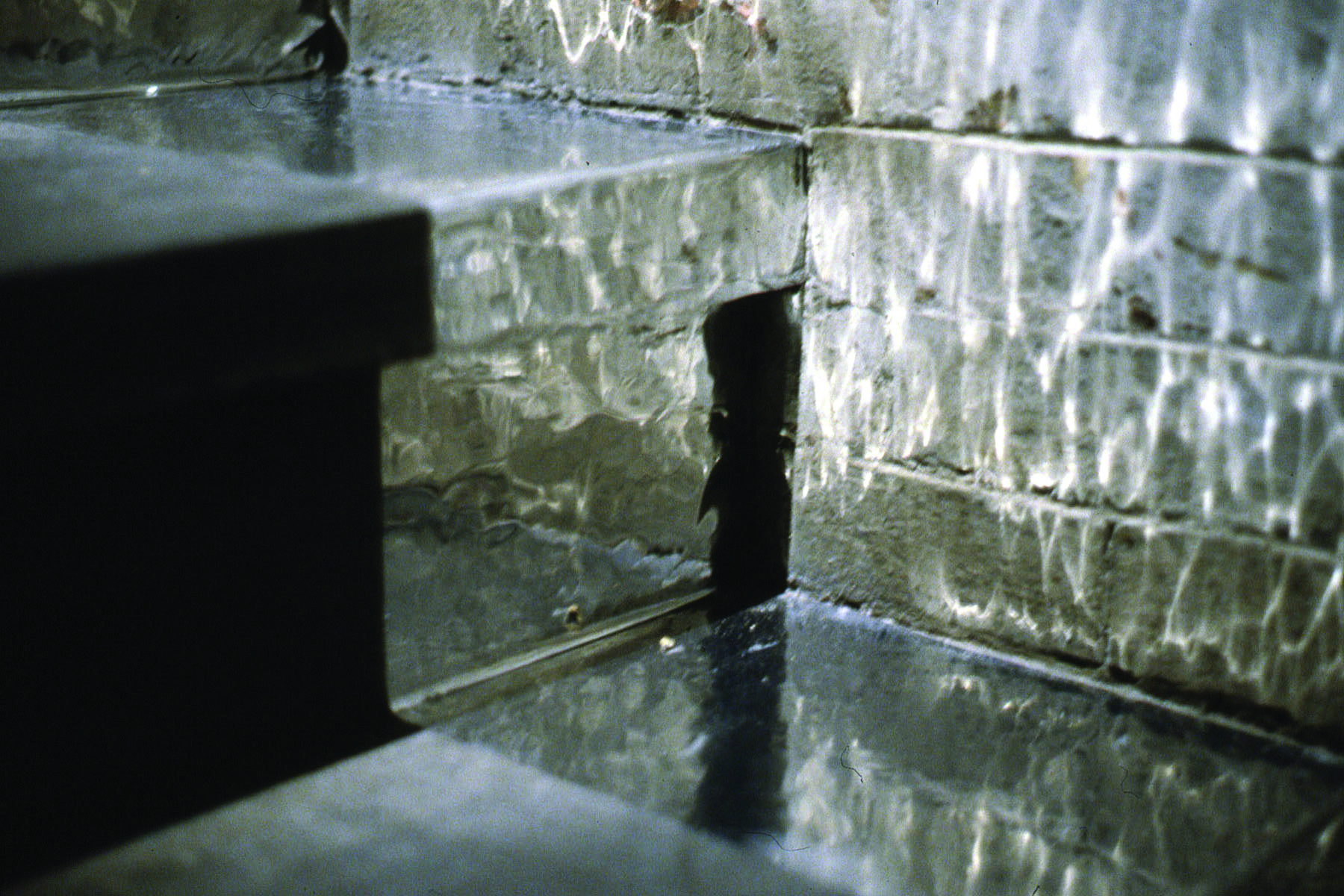Kira Lynn Harris
Curated by Senga Nengudi
April 9 - May 23, 2009
Kira Lynn Harris is a New York based artist whose minimalist work often posits an intersection of the formal concerns of space, light and the phenomenological with issues of individual subjectivity. Harris works in installation, drawing, photography and video and has had solo exhibitions at Bruno Marina Gallery, Brooklyn, NY; the Delaware Center for the Contemporary Arts, Wilmington, DE; and a site specific project on extended view at P.S. 1 / the Museum of Modern Art, New York, NY. She was an artist-in-residence at the Studio Museum in Harlem, New York, NY; the Center for Photography, Woodstock, NY; Omi International Art Center, Columbia County, NY; and the Lower Manhattan Cultural Council, New York, NY. Harris has won several awards including a 2003 artist-in-residence video production grant from Harvestworks, New York, NY; California Arts Council Artist in Residence grants, Sacramento, CA; and the1998 Lorser Feitelson Emerging Artist award. Harris has been exhibiting her art widely in the past several years; her work has been shown in galleries and museums in California, New York, Miami, Texas, Washington, D.C. and Italy. Her work has been reviewed in The New York Times, Flash Art, Time Out New York, zingmagazine, the Los Angeles Times, Artweek and LA Weekly. She is a graduate of the California Institute of the Arts, Valencia, CA and completed the Whitney Independent Study Program at the Whitney Museum, New York, NY in 1999. This exhibition at CUE marks Harris' first solo show in Manhattan.
Senga Nengudi is a sculptor, installation and performance artist whose work deals with the transitory nature of life, body and objects.
Nengudi became known in the 1970's for her R.S.V.P. series of sculptures made primarily of nylon mesh (panty hose), sand and found objects, which provided an unflinching look into female psyche and body issues. Grounded in African and Eastern Philosophies, ritual practices, movement and the exercising of spirit, her installations and performances are created as topography.
As an artist in residence at the Fabric Workshop and Museum in Philadelphia, she produced the 2007 audio-video based works, Warp Trance and The Threader. These two works brought an abstract ritual state to the repetitive process of fabric making in the Pennsylvania mills.
Nengudi's works have been included in numerous group and solo exhibitions: R.S.V.P. Revisited, Thomas Erben Gallery, New York, NY; RxArt, RX Art Ball, New York, NY; Out of Action: Between Performance and Object, 1949-1979, The Museum of Contemporary Art, Los Angeles, CA; Clothesline: Art, Clothing, Identity, Santa Fe Art Institute, NM; Double Consciousness: Black Conceptual Art Since 1970, The Contemporary Arts Museum Houston, TX; WACK! Art and the Feminist Revolution, The Museum of Contemporary Art, Los Angeles, CA; Cinema Remixed and Reloaded: Black Women and Artists and the Moving Image Since 1970, The Brown Foundation Gallery at Contemporary Arts Museum Houston, TX; and Second Lives: Remixing the Ordinary, Museum of Arts and Design, New York, NY. Her awards include Louis Comfort Tiffany Foundation Award in 2005, Anonymous Was A Woman Award in 2005 and the Creative Artists Public Service Grant for Sculpture from the New York State Council on the Arts in 1974. Nengudi is in the collections of The Museum of Contemporary Art, Los Angeles, CA; Studio Museum in Harlem, New York, NY; and Carnegie Museum of Art, Pittsburgh, PA.
ARTIST'S STATEMENT
Light as both medium and content...
I have long been interested in light, space and perception; my installations often provide occasions for de-stabilization and re-orientation. To achieve this, I make architectural and environmental interventions - using light and reflective surfaces, by inverting subject and object or figure and ground, and by reversing up and down, exterior and interior. I prefer to create these installations in nominal and transitional spaces; those places in our built environments which we usually ignore, overlook or simply fail to see in our rush to get from one place or appointment to another: corners, hallways, stairwells, ceilings, floors, blank walls...
These concerns date from my upbringing in Southern California; first as a child seeing a sky nearly uninterrupted by skyscrapers, and by spaces such as Los Angeles' famous Bradbury Building, first visited on a childhood field trip. Later, in college, these interests became a formal and conceptual investigation upon encountering the works of artists such as Robert Irwin and James Turrell (both at one time California-based artists as well as pioneers of the Light and Space movement).
My explorations of architectural spaces, light, and observation bring me almost inevitably to an interest in perspective drawing and its history. Perspective as we know it from the Renaissance until now is a system of representation that could be described as a fictional depiction of perceived space. Most recently I have been drawn to the engravings of the Dutch painter and architect, Jan Vredeman de Vries, whose work helped disseminate the perspective theories of Leone Battista Alberti and Albrecht Dürer. De Vries' depictions of architectural spaces in perspective are fantastical - almost always empty of people, the buildings he imagines or represents are nearly surreal.
This brings me to some of my other interests. Like many artists, there are a number of ideas, concepts, and images that "live in my head" at most times. One of those is the idea of the sublime - that arresting, overwhelming and, usually, momentary combined feeling of beauty and horror theorized by so many philosophers. Another longstanding passion is for speculative fiction - science fiction, fantasy, and horror, all of which pose the "what if?" questions. For the past ten years, I've been particularly interested in both the fiction and critical essays of Samuel R. Delany who imagines worlds both past and future where our "normal" categories of human identity and behavior are called into question.
These interests all form tangential rather than direct relationships to one another. The installations and drawings included in this show are some of the results of my placing these divergent thoughts together.
CURATOR'S STATEMENT
by Senga Nengudi
Duration-Memory-Intuition
I met Kira Lynn Harris in the Summer of 1998 as she motored from Los Angeles, her place of birth and rearing, to New York. All of her worldly possessions were packed to the hilt in a decade old blue 4 door Honda Civic. A classic journey that has been made by many who now call themselves New Yorkers.
Given my name and information by a mutual friend, she stopped over in Colorado and stayed with me and mine for the night to get some much needed rest. What a joy-filled occurrence. The night and next morning were filled with thoughts and conversation on critical art theories, philosophy, artists and art activism, and a bit of rock climbing in the mix. Kira's enthusiasm was contagious. An accomplished artist and 1998 graduate of California Institute of the Arts, Kira was set to expand her horizons, exercise aesthetic curiosity and build her career. She has done just that, as the work in this exhibition and a deep résumé will attest.
An explorer of light and the temporal, it makes sense that some of her touchstones are Turner, Monet, Eva Hesse, James Turrell and David Hammons. Kira is able to capture the spatial, temporal aspects of light, directing its rhythm as it shimmers and gyrates onto walls and architectural surfaces, faces, bodies and objects. Even her drawings echo this shimmering use of light and reflective surfaces as meditations, intentionally disorienting the viewer to the point of needing a re-orientation to a new reality - disengaging from the known. Kira shares with critical philosopher Maurice Merleau-Ponty the aim to "undo our natural pact with the world in order to remake it."
Another aspect, though not always overt, is an intersecting interest in Science Fiction. Noting a subtext of her work, Kira states, "what most intrigues me about Science Fiction are notions of the speculative - the "what if?" questions being more engaging than any definitive answer." Kira joins an ever-widening group of Black visual artists including Cauleen Smith, Olalekan Jeyifous, Arthur Jafa and writers such as Octavia Butler and Greg Tate who are involved in aesthetic and intellectual investigations using Science Fiction as a reference or springboard for their explorations. Mark Dery noted this trend in his 1995 essay, Black to the Future, coining the term, Afrofuturism. Of course the jazz master of note that carried this banner was Sun Ra - taking followers on intergalactic space journeys with irregular regularity. After Sun Ra, coming from another angle and perhaps a whole other planet, was George Clinton and Parliament-Funkadelic with their mother ship which infused "funk" into our cultural landscape.
What is most compelling is that Kira's visual poetry allows access to what are usually intimate moments of solar-to-soul connections - when abstract compositions are created by light and circumstances, hinting at the existence of otherness. In each instance making no comment about itself - being only what it is...gone sometimes as soon as it is noticed. That moment is held in place for us through installations, drawings and photos so it may be taken in and absorbed on the cellular level. In real time such an experience is transient and transcendent, only living in memory, not an object to have and hold.
CATALOGUE ESSAY: Nicole J. Caruth on Kira Lynn Harris

